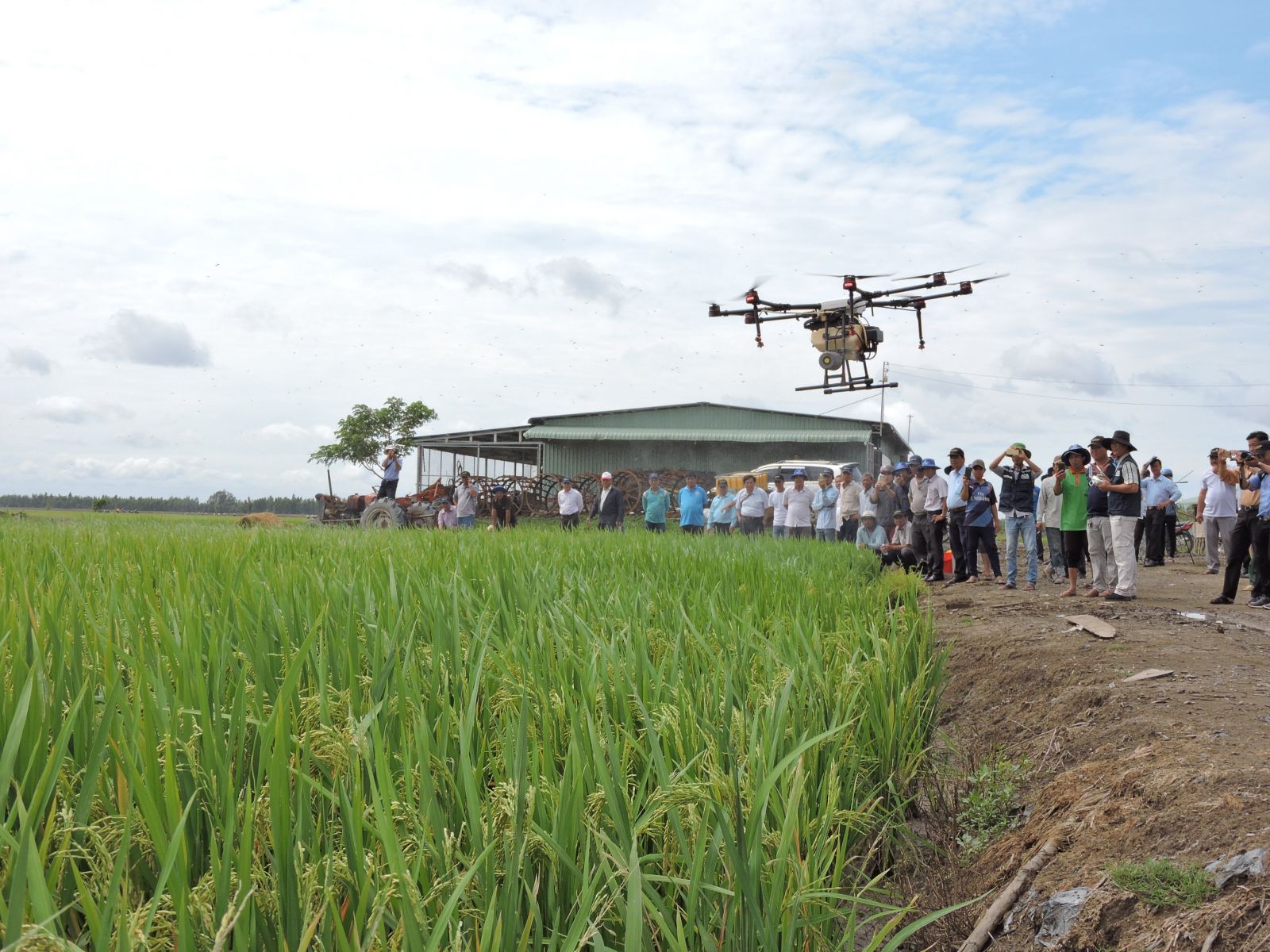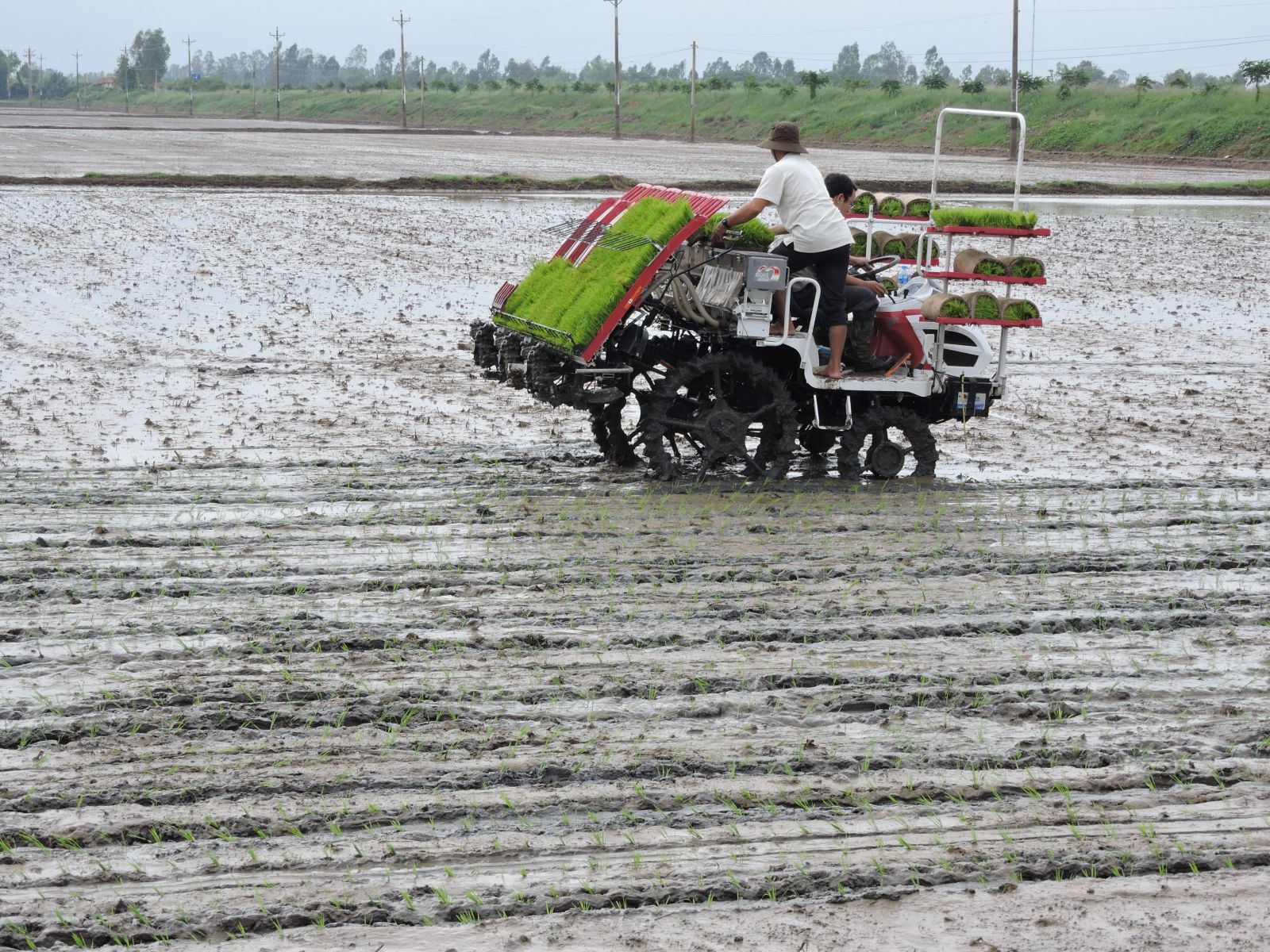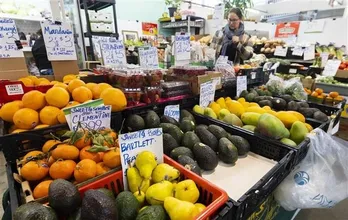Tan Hung is one of the agricultural districts of the province. Currently, Tan Hung has 74,000 hectares of land for rice cultivation, most farmers actively invest in machinery from land preparation to harvesting agricultural products. Accordingly, in the season, many types of machines appear throughout the fields in the district, helping farmers to reduce production costs, increase productivity and product competitiveness, especially production of goods towards modern industrial direction to meet the demand for export standards.
Deputy Head of the Department of Agriculture and Rural Development of Tan Hung district - Phan Van Ni said: “Currently, farmers apply 100 percent of mechanization in reparing land; in the sowing stage, over 95 percent of shoulder-bearing machines is used, the rest uses seeding and sowing machines; 100 percent of combine harvesters are used in harvesting the crops; 100 percent of machines ae used for transporting agricultural products, etc. On average, each commune has 5-6 combine harvesters, 4-5 tractors, etc. The implementation of mechanization into the field has changed perceptions of local people, helping them recognize the efficiency of applying high technology to cultivation, thereby making rice harden, easy to care for, less falling, reducing nitrogen fertilizer 20-30 percent, less pests and diseases increase profits from 4-6 million VND per hectare, compared with production in the traditional way”.

Farmers of Tan Hung district implement mechanization into the field
Previously, when the crop came, Mr. Nguyen Van Tam, living in Vinh Dai commune, had to run everywhere hiring dozens of workers to serve 10 hectares of rice production. If he cannot hire people, his whole family has to work together. In recent years, he strongly invested in tractors, combine harvesters, and so on that contribute to shorten the time from farming to harvesting, freeing up his labor force, increasing productivity.
Mr. Tam expressed his heart: “Investment in the field of mechanization not only helps me to solve the problem of labor shortage when the crop comes, but also helps create jobs for many rural workers. After serving production for my family, I also work as hired labor for the people around. It depends on the situation each year, I change the system to serve the mechanization in the field”.

In 2014, Hung Thinh high-tech Seed Research and Production Co., Ltd. was established in Hung Thanh commune. Here, the company invested in 2 spraying machines (running machines and spraying aircraft), 1 combine harvester, 4 tractors, 1 kobe, 1 transplanter, etc. Currently, the company cultivates nearly 200 hectares; at the same time, linking production with farmers on 200 hectares. In order to reduce production costs, the company supports farmers from sowing to field work, especially advising farmers to buy machines for agricultural production.
Deputy Director of Hung Thinh Hi-Tech Seed Research and Production Co., Ltd. - Bui Van Cuong shared: “Normal spraying machine works up to 3 hectare per day, and sprayers with a capacity of 20- 30 hectares, does not affect health, saves costs. Seeing the benefits of the company's spraying aircraft, farmers in Tan Hung district bought more than 10 machines. The company always actively guides people to use modern equipment; at the same time, it is ready to assist when farmers need it. It can be seen that it is necessary to implement mechanization into the fields, farmers no longer have to spend much effort and effort, especially with quality products, without being forced by traders”.
Bringing mechanization into the field is one of the first criteria of the cultivation of high-tech rice, contributing to increasing productivity and reducing labor force. This is the premise for Tan Hung district in particular and the province in general to make products with high competitiveness in the rice export market and increasingly affirm the brand of Vietnamese rice./.
By Kim Ngoc – Translated by Duc Tam
Source: https://baolongan.vn/tan-hung-hieu-qua-tu-viec-dua-co-gioi-hoa-vao-dong-ruong-a104561.html
 Retailer brings Vietnamese products closer to consumers in Canada
Retailer brings Vietnamese products closer to consumers in Canada




